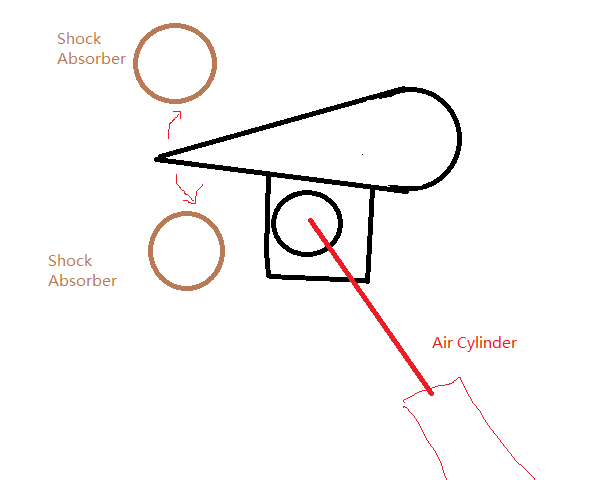HaoYu
Mechanical
- Mar 11, 2019
- 2
Hi everyone,
I'm still very green when it comes to engineering design and I tried to look on the net to find what an ideal shock absorber would look like for an air cylinder that is travelling extremely fast (1300 mm/s)for a stroke length of 10mm, but I'm afraid I can't find any. I'm forced to use an external stopper because the internal cushioning cannot be used due to the extremely fast speed of the piston inside the air cylinder.
Is rubber ideal? If so, what kind? Does the shape of the rubber make a difference? Will it absorb more energy if the shock absorber was square as opposed to circular?
Any help or assistance would be appreciated. I attached a picture if that makes things a bit clearer
if that makes things a bit clearer

I'm still very green when it comes to engineering design and I tried to look on the net to find what an ideal shock absorber would look like for an air cylinder that is travelling extremely fast (1300 mm/s)for a stroke length of 10mm, but I'm afraid I can't find any. I'm forced to use an external stopper because the internal cushioning cannot be used due to the extremely fast speed of the piston inside the air cylinder.
Is rubber ideal? If so, what kind? Does the shape of the rubber make a difference? Will it absorb more energy if the shock absorber was square as opposed to circular?
Any help or assistance would be appreciated. I attached a picture

